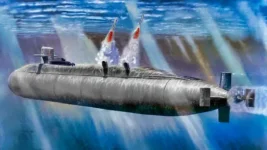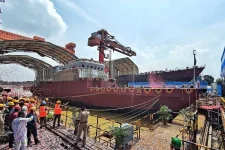- Views: 311
- Replies: 11
The Indian Navy is poised for a significant enhancement of its underwater combat strength through a proposal to procure nine state-of-the-art submarines under Project 75 (India), or P-75(I).
According to government sources, this major acquisition, with an estimated value between ₹90,000 crore and ₹1 trillion, is awaiting final clearance from the Cabinet Committee on Security (CCS).
The plan outlines an initial contract for six vessels, with an option to order three more a year after the agreement is signed, in line with the Defence Acquisition Procedure (DAP) of 2020.
This development signals a strategic pivot in India's submarine acquisition programme, potentially shifting focus from a long-standing collaboration with France to a new partnership with Germany.
The French Naval Group was the key partner in the preceding Project 75, which resulted in the construction of six Kalvari-class (a variant of the Scorpene class) submarines by Mazagon Dock Shipbuilders Limited (MDL) between 2006 and 2015.
The new P-75(I) initiative is expected to be executed through a collaboration between India’s state-owned MDL and Germany’s ThyssenKrupp Marine Systems (TKMS).
The proposed deal with the German firm could directly impact plans to expand the current Kalvari-class fleet. An earlier proposal involved MDL building three more Scorpene submarines that were to be upgraded with a domestically developed Air-Independent Propulsion (AIP) system.
However, this ₹36,000 crore project has faced significant hurdles, including delays in the finalisation of the indigenous AIP technology and a growing consensus that the Scorpene platform represents an older generation of submarine design.
A senior government official familiar with the matter indicated a clear shift in priorities, stating that further orders for the Scorpene platform under Project 75 are not anticipated.
This move underscores a strategic decision to invest in newer, more advanced technology. The submarines to be acquired under the P-75(I) project are required to feature superior stealth characteristics and be equipped with a proven AIP system from the start.
An AIP system is a critical technology that allows conventional, non-nuclear submarines to remain submerged for extended periods, significantly increasing their operational endurance and stealth capabilities compared to traditional diesel-electric submarines that must surface frequently to recharge their batteries.
This capability is seen as essential for the Indian Navy to effectively monitor and counter the expanding naval presence of China in the Indian Ocean Region.
The final approval for this landmark defence deal now rests with the CCS, whose decision will shape the future of India's naval power and its international defence partnerships for decades to come.








